Praise for Antony Lewis
Einstein said that if you cant explain it simply, you dont understand it well enough. Antony clearly understands and articulates the basics of cryptocurrencies and blockchain tech nologies.
Colin Platt, Cohost of Blockchain Insider podcast & DLT/cryptocurrency researcher
The first book that Ive seen that really breaks down concepts. An excellent insight into the key concepts and real-world implications of bitcoin and bl ockchain.
Zennon Kapron, managing director of Kapronasia
If you want a book that over-sells blockchain, go elsewhere. This explains the fundamentals clearly and cuts through the hype.
Richard Gendal Brow n, CTO, R3
Bitcoin
on the Go
The Basics of Bitcoins and Blockchains Condensed
Based on the work of
Antony Lewis
By the editors at Mango Publishing
.png)
Coral Gables
Copyright 2022 by Antony Lewis.
Published by Mango Publishing, a division of Mango Publishing Group, Inc.
Cover Design & Layout: Roberto Nunez
Mango is an active supporter of authors rights to free speech and artistic expression in their books. The purpose of copyright is to encourage authors to produce exceptional works that enrich our culture and our open society.
Uploading or distributing photos, scans or any content from this book without prior permission is theft of the authors intellectual property. Please honor the authors work as you would your own. Thank you in advance for respecting our authors rights.
For permission requests, please contact the publisher at:
Mango Publishing Group
2850 S Douglas Road, 4th Floor
Coral Gables, FL 33134 USA
For special orders, quantity sales, course adoptions and corporate sales, please email the publisher at or +1.800.509.4887.
Bitcoin on the Go: The Basics of Bitcoins and BlockchainsCondensed
Library of Congress Cataloging-in-Publication number: 2022944395
ISBN: (print) 978-1-68481-203-5 (ebook) 978-1-68481-204-2
BISAC category code: BUS090030, BUSINESS & ECONOMICS / E-Commerce / Online Trading
Printed in the United States of America
T able of Contents
Bitcoin, blockchains, and cryptocurrencies are fascinating to me because there are so many elements to understand. This multidisciplinary nature is one of the reasons I, and so many others, love the industryit is easy to get sucked into the rabbit hole, and as you try to understand each element, every answer begets more questions. The journey starts with What is Bitcoin? but the explanations and answers come from the disciplines of economics, law, computer science, finance, civil society, history, geopolitics, and more. You could create a pretty comprehensive high school curriculum around Bitcoin and have plenty of material to spare.
And this is the very reason why it is so hard to explain. This book is an attempt to cover the basics. It is aimed at the thinking person but assumes that the reader doesnt have a detailed background in the various disciplines mentioned previously. Different people will find different parts interesting. I try to use analogies where I think they help explain some concepts, but be gentle with me: all analogies break down if stretched too far. And although I have tried to be accurate, there will still be oversimplifications, errors and omissions. What is true today may not be tomorrow: the pace of change is rapid. I am the first to admit that there are limits to my own technical expertise. Nevertheless, I hope that every reader comes away learning some thing new.
With so many cryptocurrencies, it is not easy to make accurate generalisations: there are bound to be exceptions. For example, Bitcoin has proof-of-work (which we will cover later). This competition consumes a lot of electricity. However, not all cryptocurrencies work this way.
Bearing this in mind, we will start with how Bitcoin works and then discuss some differences between Bitcoin and other cryptoc urrencies.
Chapter 1
Bitcoin Basics
People refer to Bitcoin as a digital currency, virtual currency, or cryptocurrency, but it may be easier to think of it as an electronic asset. Bitcoin is also sometimes described as a digital token, and in some respects that is accurate, but the term token is now also used to mean something more specific, so the ambiguity of this term is bes t avoided.
What Are Bitcoins?
Bitcoins are digital assets (coins) whose ownership is recorded on an electronic ledger updated (almost) simultaneously on about ten thousand independently operated computers, known as nodes, around the world. This ledger is called Bitcoins blockchain. Each node independently validates all pending transactions wherever they arise. Specialist nodes, called miners, bundle valid transactions into blocks and distribute those blocks to nodes across th e network.
Anyone can buy bitcoins, own them, and send them to others. Every Bitcoin transaction is shared publicly in plain text on Bitcoins blockchain. Anyone can, in theory, create bitcoins for themselves too. This is part of the block creation process, called mining, and is descri bed later.
What Is the Point of Bitcoin?
The purpose of Bitcoin is described in a short document written by a pseudonymous Satoshi Nakamoto, published in October 2008. The abst ract says:
A purely peer-to-peer version of electronic cash would allow online payments to be sent directlywithout going through a financial institution. We propose a solutionusing a peer-to-pee r network.
It sets out the purpose of Bitcoin and how Bitcoin derives both value and utility. As popularised by cryptocurrency industry commentator Tim Swanson, Bitcoin is designed as censorship-resistant dig ital cash.
How Does Bitcoin Work?
The Bitcoin blockchain is managed by about ten thousand computers. The most used software is called Bitcoin Core, and the source code to this software is published on GitHub. This software contains the full range of functionalities needed for the network to exist. It can perform the follow ing tasks:
Connect with other participants in the Bitco in network
Download the blockchain from other pa rticipants
Store the blockchain
Listen for new tr ansactions
Validate those tr ansactions
Store those tr ansactions
Relay valid transactions to o ther nodes
Listen for new blocks
Validate th ose blocks
Store those blocks as part of its blockchain
Relay va lid blocks
Create new blocks
Mine new blocks
Manage addresses
Create and send tr ansactions
However, in practice, the software is usually only used for its bookkeeping function, as explained in thi s section.
Bitcoin: an electronic payment system without a financial institution. If parties need to identify themselves, they lose privacy and are vulnerable to interference, coercion, prison, or worse. Every single part of the solution needs to work with these constraint s in mind.
The solution starts with a classic centralised model and then tries to decentralise it, building the design of Bitcoin ste p by step.
Classic Centralised Model
Lets start with a list with two columns: Account and Balance, managed by an admi nistrator.
Classic central ized model |
Bookkeeper |
Account | Balance |
000001 | $100 |
000002 | $50 |
000003 | |


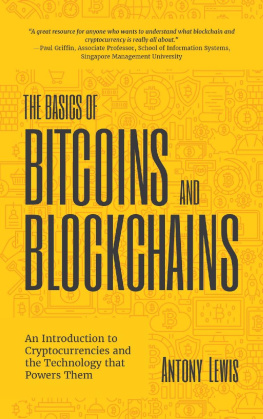
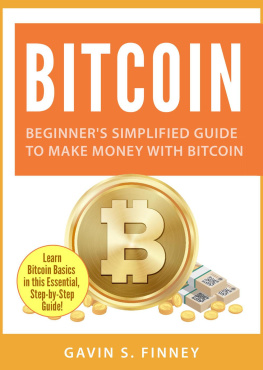

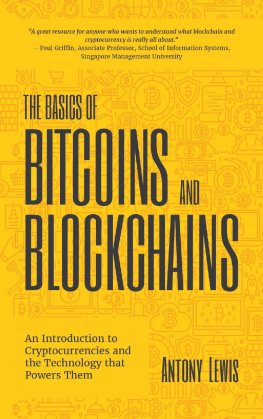
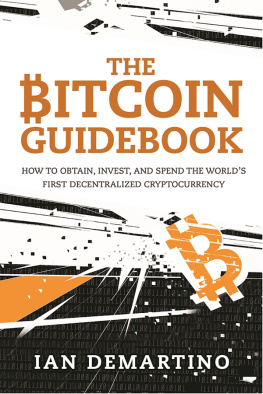
![Harish Kumar Garg [Harish Kumar Garg] - Hands-On Bitcoin Programming with Python](/uploads/posts/book/119676/thumbs/harish-kumar-garg-harish-kumar-garg-hands-on.jpg)
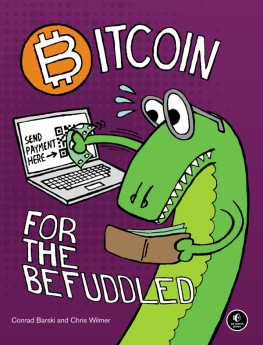

.png)